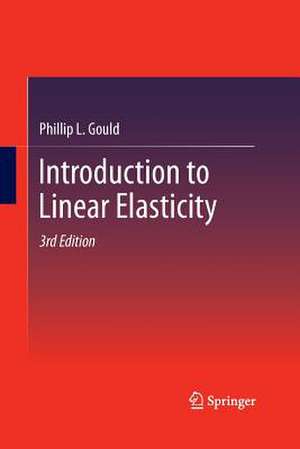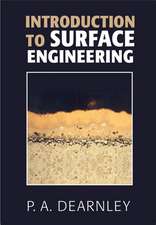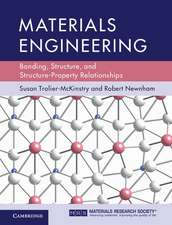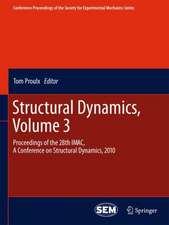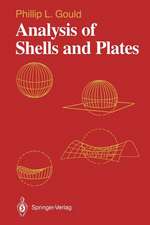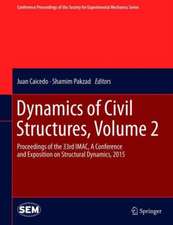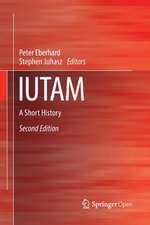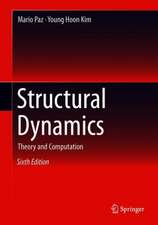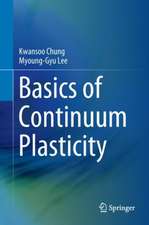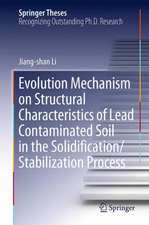Introduction to Linear Elasticity
Autor Phillip L. Goulden Limba Engleză Paperback – 6 apr 2015
Preț: 502.87 lei
Preț vechi: 591.60 lei
-15% Nou
Puncte Express: 754
Preț estimativ în valută:
96.22€ • 100.46$ • 79.64£
96.22€ • 100.46$ • 79.64£
Carte tipărită la comandă
Livrare economică 04-18 aprilie
Preluare comenzi: 021 569.72.76
Specificații
ISBN-13: 9781489998101
ISBN-10: 1489998101
Pagini: 368
Ilustrații: XIX, 346 p.
Dimensiuni: 155 x 235 x 19 mm
Greutate: 0.52 kg
Ediția:3rd ed. 2013
Editura: Springer
Colecția Springer
Locul publicării:New York, NY, United States
ISBN-10: 1489998101
Pagini: 368
Ilustrații: XIX, 346 p.
Dimensiuni: 155 x 235 x 19 mm
Greutate: 0.52 kg
Ediția:3rd ed. 2013
Editura: Springer
Colecția Springer
Locul publicării:New York, NY, United States
Public țintă
Upper undergraduateCuprins
Introduction and Mathematical Preliminaries.- Traction, Stress and Equilibrium.- Deformations.- Material Behavior.- Formulations, Uniqueness and Solutions Strategies.- Extension, Bending and Torsion.- Two-Dimensional Elasticity.- Thin Plates and Shells.- Dynamic Effects.- Viscoelasticity.- Energy Principles.- Strength and Failure Criteria.- Something New.
Recenzii
From the reviews of the third edition:
“The present textbook is an introductory course in the theory of linear elasticity. … It is pleasantly readable not only for students specialized in engineering, but also for students specializing in other fields, especially in mathematics, who are interested in mathematical and technical theories of elasticity. It can also serve as a reference book. … The chapters are endowed with computational examples and exercises, which make the textbook transparent and easy to understand.” (Georg V. Jaiani, zbMATH, Vol. 1280, 2014)
“The present textbook is an introductory course in the theory of linear elasticity. … It is pleasantly readable not only for students specialized in engineering, but also for students specializing in other fields, especially in mathematics, who are interested in mathematical and technical theories of elasticity. It can also serve as a reference book. … The chapters are endowed with computational examples and exercises, which make the textbook transparent and easy to understand.” (Georg V. Jaiani, zbMATH, Vol. 1280, 2014)
Notă biografică
Dr. Phillip L. Gould was the Harold D. Jolley Professor of Civil Engineering from 1981 until 2010 and is now a Senior Professor at Washington University in St.Louis. His research activities have centered on shell analysis with applications to finite element modeling, biomedical engineering, earthquake engineering, and the structural design of thin-shell structures. Dr. Gould is the author of numerous papers and several books and is the founding editor of the prestigious journal, Engineering Structures. He has served as a consultant to industry and to governmental organizations and has received numerous awards for his research, professional and educational activities.
Textul de pe ultima copertă
Introduction to Linear Elasticity, 3rd Edition, provides an applications-oriented grounding in the tensor-based theory of elasticity for students in mechanical, civil, aeronautical, and biomedical engineering, as well as materials and earth science. The book is distinct from the traditional text aimed at graduate students in solid mechanics by introducing the subject at a level appropriate for advanced undergraduate and beginning graduate students. The author's presentation allows students to apply the basic notions of stress analysis and move on to advanced work in continuum mechanics, plasticity, plate and shell theory, composite materials, viscoelasticity and finite method analysis.
This book also:
This book also:
- Emphasizes tensor-based approach while still distilling down to explicit notation
- Provides introduction to theory of plates, theory of shells, wave propagation, viscoelasticity and plasticity accessible to advanced undergraduate students
- Appropriate for courses following emerging trend of teaching solid mechanics within undergraduate engineering curricula
- Presents meaningful examples with detailed steps and results
- Includes instructors' solutions manual
Caracteristici
Emphasizes tensor-based approach while still distilling down to explicit notation Provides introduction to theory of plates, theory of shells, and plasticity accessible to advanced undergraduate students Appropriate for courses following emerging trend of teaching solid mechanics within undergraduate engineering curricula Presents meaningful examples with detailed steps and results Includes instructors' solutions manual Request lecturer material: sn.pub/lecturer-material
